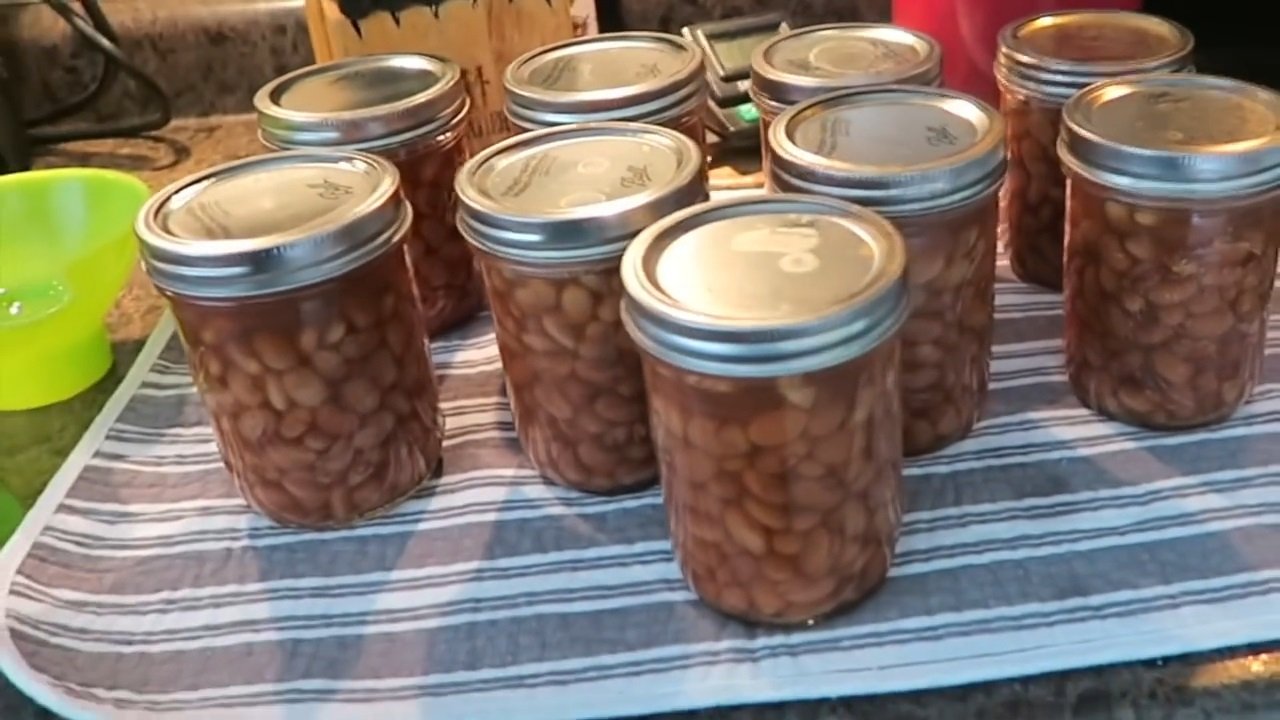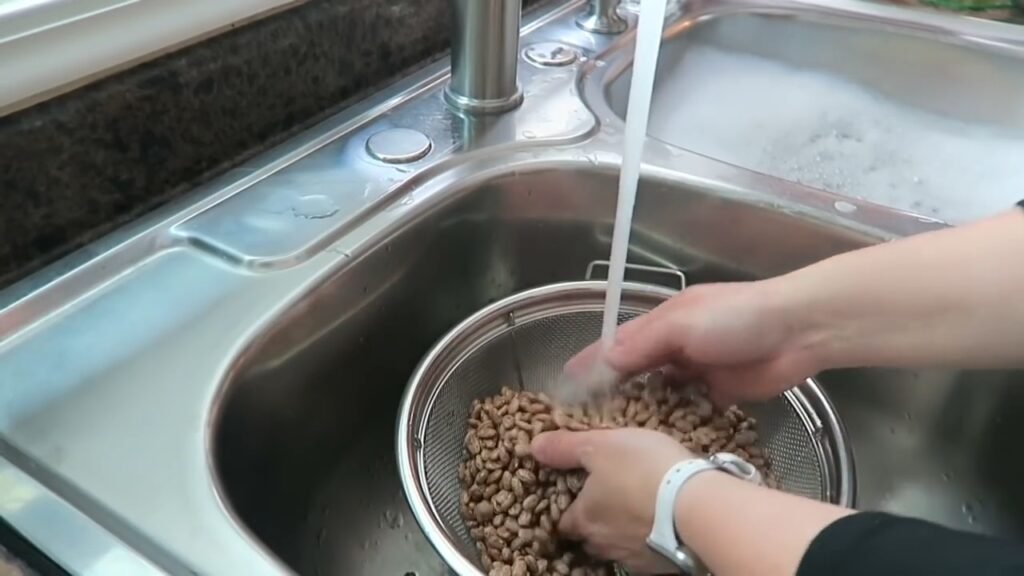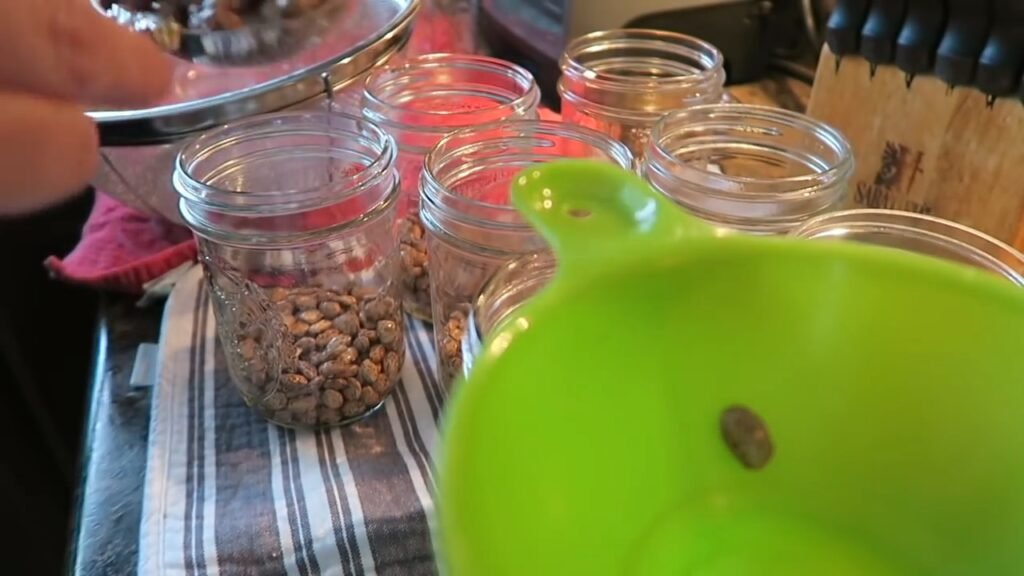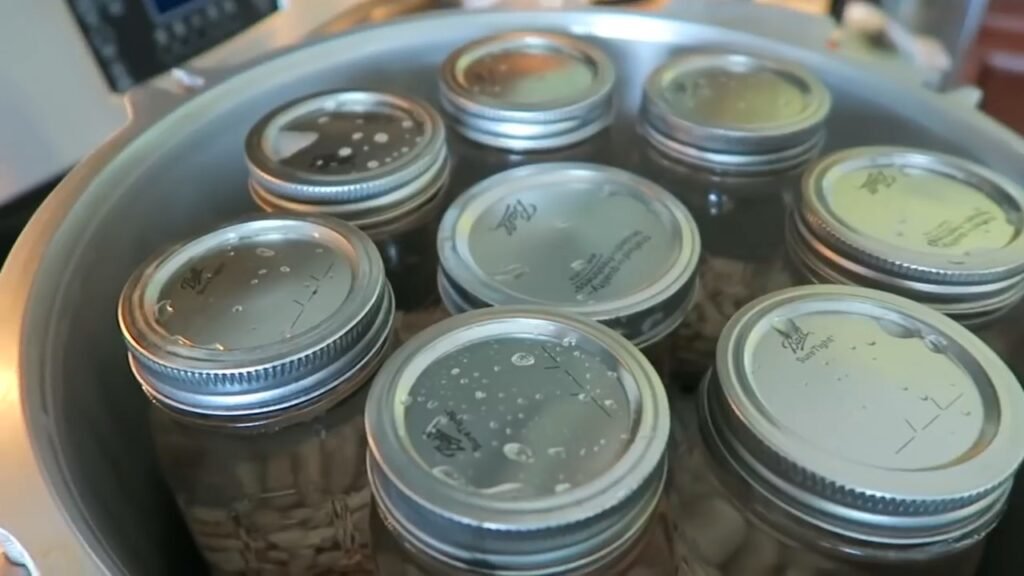Nutrition Facts
0 servings

If you've ever wondered whether home canning is worth the time and effort, let’s put it to the test. In this article, I’ll show you exactly how I turned a $1 bag of dried pinto beans from the Dollar Tree into nine jars of shelf-stable food — and how much money I saved in the process.
Spoiler alert: the results might surprise you.
Can You Really Save Money by Canning?
Let’s get right into it. I picked up a 32-ounce (2 lb) bag of dried pinto beans for just $1. That's right — one dollar. Then I compared it to the cost of a single 15-ounce can of pinto beans from Walmart, which goes for $0.58.
So, if I can get more than two jars’ worth of beans from that $1 bag, I’m already ahead. And guess what? I ended up with nine pint jars — the rough equivalent of nine store-bought cans of beans — all from that one bag.
That’s nine jars for the price of less than two store-bought cans. Canning win? Absolutely.
How I Canned the Beans (Step-by-Step Breakdown)
I used the no-soak method (note: this is not an official USDA-approved method, but it works well for me). Here’s a simple breakdown of the process:
Sort the Beans
I sifted through the entire bag, picking out any broken beans, stones, or debris.
Rinse and Load the Jars
I used wide-mouth pint jars, added ½ cup of dry beans to each, and filled them with water, leaving proper headspace.
No Salt, No Seasoning
I skipped adding salt or spices to keep things low-sodium and versatile for cooking later.
Canning Setup
I used room temperature water in both the jars and the canner. The process took about 30 minutes of hands-on time before loading the canner.
Process and Store
After pressure canning, I had nine beautifully sealed jars of beans ready to stock in my pantry.
The Real Savings of Canning
Let’s talk numbers:
Cost of 9 store-bought cans: $0.58 x 9 = $5.22
Cost of home-canned beans: $1 (plus a few pennies for water and lid use)
Even if you account for energy costs, reusable jars, and time, you're saving at least 70–80% on canned beans — and likely more if you reuse jars and shop dried goods in bulk.
Why Canning is More Than Just a Budget Hack
Canning isn’t just about saving money — it’s about gaining control over your food supply, reducing sodium, and having the peace of mind that your pantry is full of nutritious, shelf-stable food.

For me, canning started out of necessity during a tough time when store-bought food was too expensive. It became a lifesaving skill that let me feed my four growing boys — and now, it's a lifelong habit.
Beyond the financial benefits, home canning:

Builds a reliable food storage system
Helps avoid waste during power outages
Encourages healthier eating habits
Provides food security for your family and community
New to Canning? Don’t Be Intimidated
I was once terrified of canning too. I thought pressure canners were going to explode. I worried I’d do it wrong. But once I learned the basics and took that first step, I never looked back.
And you don’t have to go it alone! The canning community — on YouTube, Facebook, and beyond — is full of experienced, encouraging folks ready to support you.
💬 If you’re new to canning or need a cheerleader, drop a comment below or join our Facebook group, “Something Stays Friends.” I’d be honored to help you get started.

Final Thoughts: Is Canning Worth It?
Absolutely. For me, home canning has proven to be an invaluable skill that:
Saves money
Reduces food waste
Increases self-reliance
Builds confidence in your kitchen

Whether you’re on a tight budget or just want better control over your food, canning is a game-changer. So don’t be afraid to start — grab a bag of dried beans and give it a try. If I can do it, you absolutely can too.

If you've ever wondered whether home canning is worth the time and effort, let’s put it to the test. In this article, I’ll show you exactly how I turned a $1 bag of dried pinto beans from the Dollar Tree into nine jars of shelf-stable food — and how much money I saved in the process.
Spoiler alert: the results might surprise you.
Can You Really Save Money by Canning?
Let’s get right into it. I picked up a 32-ounce (2 lb) bag of dried pinto beans for just $1. That's right — one dollar. Then I compared it to the cost of a single 15-ounce can of pinto beans from Walmart, which goes for $0.58.
So, if I can get more than two jars’ worth of beans from that $1 bag, I’m already ahead. And guess what? I ended up with nine pint jars — the rough equivalent of nine store-bought cans of beans — all from that one bag.
That’s nine jars for the price of less than two store-bought cans. Canning win? Absolutely.
How I Canned the Beans (Step-by-Step Breakdown)
I used the no-soak method (note: this is not an official USDA-approved method, but it works well for me). Here’s a simple breakdown of the process:
Sort the Beans
I sifted through the entire bag, picking out any broken beans, stones, or debris.
Rinse and Load the Jars
I used wide-mouth pint jars, added ½ cup of dry beans to each, and filled them with water, leaving proper headspace.
No Salt, No Seasoning
I skipped adding salt or spices to keep things low-sodium and versatile for cooking later.
Canning Setup
I used room temperature water in both the jars and the canner. The process took about 30 minutes of hands-on time before loading the canner.
Process and Store
After pressure canning, I had nine beautifully sealed jars of beans ready to stock in my pantry.
The Real Savings of Canning
Let’s talk numbers:
Cost of 9 store-bought cans: $0.58 x 9 = $5.22
Cost of home-canned beans: $1 (plus a few pennies for water and lid use)
Even if you account for energy costs, reusable jars, and time, you're saving at least 70–80% on canned beans — and likely more if you reuse jars and shop dried goods in bulk.
Why Canning is More Than Just a Budget Hack
Canning isn’t just about saving money — it’s about gaining control over your food supply, reducing sodium, and having the peace of mind that your pantry is full of nutritious, shelf-stable food.

For me, canning started out of necessity during a tough time when store-bought food was too expensive. It became a lifesaving skill that let me feed my four growing boys — and now, it's a lifelong habit.
Beyond the financial benefits, home canning:

Builds a reliable food storage system
Helps avoid waste during power outages
Encourages healthier eating habits
Provides food security for your family and community
New to Canning? Don’t Be Intimidated
I was once terrified of canning too. I thought pressure canners were going to explode. I worried I’d do it wrong. But once I learned the basics and took that first step, I never looked back.
And you don’t have to go it alone! The canning community — on YouTube, Facebook, and beyond — is full of experienced, encouraging folks ready to support you.
💬 If you’re new to canning or need a cheerleader, drop a comment below or join our Facebook group, “Something Stays Friends.” I’d be honored to help you get started.

Final Thoughts: Is Canning Worth It?
Absolutely. For me, home canning has proven to be an invaluable skill that:
Saves money
Reduces food waste
Increases self-reliance
Builds confidence in your kitchen

Whether you’re on a tight budget or just want better control over your food, canning is a game-changer. So don’t be afraid to start — grab a bag of dried beans and give it a try. If I can do it, you absolutely can too.
